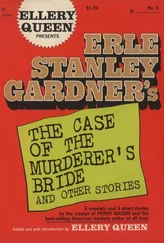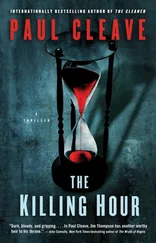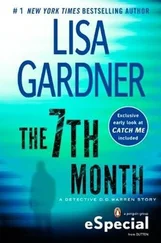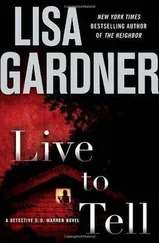“A real leaf would be better, you know. I mean, much better. What’s this for again?”
“It’s a piece of evidence in a case.”
“Like from a crime scene?” Ray’s face brightened. “If I ID this, can it be used to catch the bad guy or locate a corpse? Like they do on CSI ?”
“Absolutely,” Mac assured him.
“Groovy.” Ray accepted the paper with more enthusiasm. “A picture is definitely tougher, but I like a challenge. Let’s see what you got.”
He took out a magnifying glass and studied the image for a second. “Well, let’s start with the basics. It’s an angiosperm-to you, a broadleaf tree. Given the oval shape with pointed tip and coarse-tooth margins, it’s most likely from the Betula family-some kind of birch.” He looked up. “Where did you find this again?”
“I’m afraid I can’t comment further on that subject.”
Ray resumed staring at the picture. He frowned. “This is really all you’ve got? No bark, no flowers, no twig?”
“That’s it.”
“Well, then you also like a challenge.” Ray’s desk chair shot back. He jerked to a stop in front of the bookshelf across the way and rapidly skimmed titles. His fingers settled on a big volume labeled Gray’s Manual of Botany . “In the good news/bad news department, birch is one of the larger tree families, with a number of species commonly found here in Virginia. If you’re into history, the old Appalachian mountaineers used to make birch beer from the sap of black birch trees, which tastes a bit like wintergreen. They came close to harvesting all of the black birches in the mountains to make the stuff, then synthetic wintergreen oil was developed, and the mountaineers moved on to making moonshine. All’s well that ends well, you know.”
He shot back to his desk, propelling his chair as easily as a small automobile, while his fingers rapidly flipped through the thick index guide. Peering over his shoulder, Kimberly saw page after page of tree leaves, all richly photographed and documented with lists of words that appeared to be in Latin. Definitely not a light summer read.
“Okay, for starters we have Betula lenta, otherwise known as black birch, sweet birch, or cherry birch. Its leaves are approximately three to four inches long. Your picture is closer to two and a half inches long, but maybe our leaf isn’t mature yet, so that’s a possibility.”
“Where are black birches found?” Mac asked.
“Oh, a little bit of everywhere. You can find them in the mountains of the western half of the state, or around parts of Chesapeake Bay close to streams. Does that work?”
“I don’t know yet,” Mac said. Now, he was also frowning. “Other options?”
“The Betula lutea, or yellow birch, which is found generally higher up in the mountains than the black birch. It’s a significantly larger tree, however, growing up to eighty feet with five-inch leaves, so I’m going to guess that it’s too big to be our suspect here. Let’s see…” Ray rapidly flipped through the book.
“Okay, consider Betula papyrifera, or paper birch. Leaves also grow three inches in length, which is closer in size. It’s also found in the mountains, generally in clear-cut or burned-out areas. Then there’s Betula nigra, or river birch, which is found in low elevations along waterways or around streams, ponds, lakes, etc. It’s also a smaller birch with leaves two to three inches long. So that’s a possibility.” He looked up at them sharply. “You don’t have any catkins?”
“Cat what?”
“The flowers that are generally found with the leaves. In birches, they resemble long, conelike structures, dangling down from amid the leaves. Flower size varies dramatically, which would help narrow the scope. Better yet, would be a twig with bark. As you can guess from the names, black versus yellow versus paper, one of the key distinguishing features of birch is the color of the tree’s bark.”
“I only have a leaf,” Mac said, then muttered under his breath, “because our guy also likes a challenge.” He turned toward Kimberly, the tension building in his shoulders.
“He wouldn’t use something common,” she said quietly. “No compass, remember? So this time, the clues must narrow down a region. Or it’s really not that much of a game.”
“Good point.” Mac turned back toward the geographer. “You said birches are commonly found in Virginia. Are there any that aren’t common? Maybe a type that is rare or endangered?”
Ray’s dark eyes brightened. He stroked his chin. “Not a bad question… Nope, this isn’t going to help.” He flipped the book shut, seemed to think for a second, then turned abruptly to his computer and swiftly hit a bunch of keys. “See, what you guys really need is a dendrologist. I’m just a lowly geographer who’s spent some time dabbling with botany. A dendrologist, on the other hand…”
“Has a bigger name?” Kimberly asked.
“No, is a botanical expert on trees. See, I’m a generalist. Come on, ask me about a flower. I’m really good with flowers. Or ferns, for that matter. A dendrologist, on the other hand, could tell you anything you ever wanted to know about trees.”
“My God, there is an ologist for everything,” Kimberly muttered.
“You have no idea,” Mac said.
“See, you guys have come to the Richmond field office. Here, we’re mostly geographers and hydrologists. Most of us have other backgrounds as well-botany, biology, geology, etc., and we’re happy to help you out, but maybe we’re not as specific as you need. Now, up in Reston at our national headquarters, we got botanists, palynologists, geologists, karst geologists, you name it. That’s where the big dawgs live.”
“Where is Reston?” Mac asked.
“Two hours north of here.”
“I don’t have two hours.”
“Suit yourself.” Ray’s fingers danced over his keyboard. “Then for the time-conscious researcher, we have the greatest marvel of the twentieth century. Ta dah! The Internet, where for every ology, there is almost always a website. Let’s face it. Geeks love technology.” He hit return, and sure enough, a website of the U.S. Department of Agriculture labeled Dendrology of Virginia appeared on the screen.
“As I live and breathe,” Kimberly said.
“And how,” Mac seconded.
“And we have a final suspect for your consideration,” Ray announced. “Lady and gentleman, may I introduce Betula populifolia, otherwise known as gray birch. This smaller member of the birch family grows only thirty feet high, with leaves of approximately three inches in length. The bark may appear brown in color, but is in fact gray-white. It is also smooth, and not peeling, unlike the yellow birch and paper birch members of the family which, frankly, always look like they’re sporting a bad case of bed head. The wood is light and soft, used mostly for pulpwood spools and fuel. Better yet, it is located in only one area of the state. Huh, well, here’s the kicker. It doesn’t say where that is.”
Ray stopped, scrunching up his nose and wiggling it from side to side as he continued to study the screen. Mac hunkered down behind the geographer, his face taking on the intent expression Kimberly was coming to know so well.
“Are you saying this birch could be the one in our picture?”
“Could be.”
“And it’s found in only one spot in the entire state of Virginia?”
“That’s what the dendrologists say.”
“I need to know that spot.” Mac paused a heartbeat. “Now.”
“Mmm hmmm, mmm hmmm, mmm hmmm. Well, here’s a thought.” Ray tapped the computer screen with his pencil. “Look at the other ranges of distribution. The gray birch is common in New York, Pennsylvania, and New Jersey. All states north of us. Which means, this tree probably prefers cooler temperatures. So if it’s growing somewhere in Virginia…”
Читать дальше












